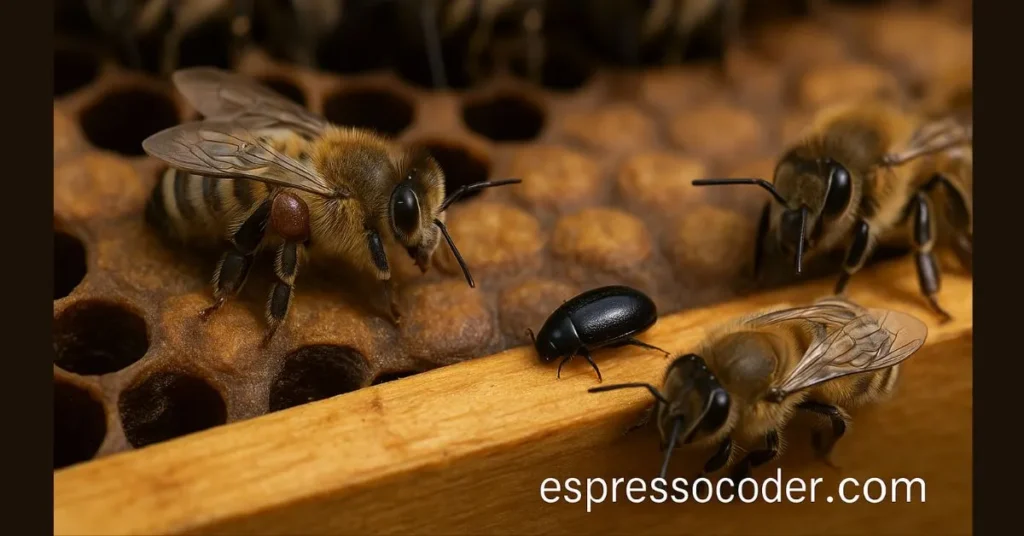Bees play a vital role in ecosystems, contributing to the pollination of over 75% of the world’s flowering plants and about 35% of global food crops. However, bee populations have been declining due to a variety of factors, including habitat loss, pesticide use, diseases, and pests. One of the most significant threats to bee health today is the invasion of harmful pests and parasites that compromise their survival. Managing these threats through effective and responsible pest control is critical for sustaining healthy bee colonies and, by extension, the global food supply. If you want to know more about pest control for bees, visit here.
Contents
Understanding the Threats to Bees
Honeybees, bumblebees, and solitary bees all face threats from a range of pests. These include parasitic mites, beetles, moths, and other insects that invade hives or attack bees directly. Some of the most common and destructive pests include:
1. Varroa Mites (Varroa destructor):
Perhaps the most well-known bee pest, Varroa mites are external parasites that feed on bee fat bodies and hemolymph (insect blood), weakening bees and spreading deadly viruses like Deformed Wing Virus. Untreated infestations can destroy entire colonies.
2. Small Hive Beetles (Aethina tumida):
Native to sub-Saharan Africa, these beetles infest hives and consume honey, pollen, and bee brood. They also cause honey to ferment, forcing bees to abandon the hive.
3. Wax Moths (Galleria mellonella):
These pests infest weak or abandoned hives and feed on beeswax, pollen, and hive debris. While not usually a threat to strong colonies, they can devastate weakened hives or stored equipment.
4. Tropilaelaps Mites:
Found mostly in Asia, these mites are similar to Varroa mites but reproduce faster and can be even more damaging. They are a growing concern for beekeeping in regions where they have spread.
5. Ants and Wasps:
These insects often raid hives for honey and brood, particularly when colonies are weak or in decline. Their attacks can stress bees and lead to hive collapse if not controlled.
Responsible Pest Control Strategies
Effective pest control for bees involves a careful balance: eliminating harmful pests while avoiding harm to the bees themselves. Here are several widely accepted methods for protecting bee colonies:
1. Integrated Pest Management (IPM)
IPM is a holistic approach that combines biological, physical, cultural, and chemical controls. Beekeepers monitor pest levels and apply treatments only when necessary. Key IPM practices include:
- Regular hive inspections to identify pest infestations early.
- Monitoring tools like sticky boards or sugar shake tests for mite detection.
- Threshold levels that determine when action is required based on pest counts.
2. Biological Controls
Introducing natural predators or beneficial microorganisms can help manage pests without harming bees. For example:
- Predatory nematodes can control wax moth larvae in stored hive equipment.
- Fungal pathogens like Metarhizium anisopliae have shown promise in targeting Varroa mites.
3. Mechanical and Physical Controls
These methods involve manual or structural changes to reduce pest populations:
- Drone brood removal is a common method for controlling Varroa mites, as they prefer to reproduce in drone cells.
- Screened bottom boards allow mites to fall out of the hive and reduce reinfestation.
- Freezing infested comb can kill wax moth larvae and other pests.
4. Chemical Treatments
When biological or physical methods are insufficient, chemical controls may be necessary. However, they must be used with caution to avoid harming bees or contaminating honey:
- Organic acids like oxalic acid and formic acid are effective against mites and generally safe when used properly.
- Essential oils, such as thymol, can also help manage mite infestations.
- Synthetic miticides may be used, but pests can develop resistance, and residues can accumulate in hive products.
Prevention and Hive Management
Good hive management practices can help prevent pest infestations from taking hold:
- Maintain strong colonies: Healthy, populous hives can fend off many invaders.
- Rotate and sterilize equipment: Regular cleaning and replacing old comb can prevent the buildup of pests and pathogens.
- Avoid stressors: Overcrowding, poor nutrition, and chemical exposure can weaken bees and make them more vulnerable to pests.
Supporting Wild Bee Populations
While much of the focus is on managed honeybee hives, wild bees are equally important pollinators and also suffer from pests and diseases. Protecting wild bee habitats, reducing pesticide use, and planting native flowering plants can support broader bee biodiversity.
Conclusion
Bees are essential to food production and biodiversity, and protecting them from pests is a key part of responsible beekeeping and environmental stewardship. Through careful monitoring, targeted treatments, and sustainable practices, it’s possible to manage bee pests effectively while preserving the health and productivity of our most important pollinators. As concern grows over pollinator declines, pest control for bees must remain a priority in both local and global conservation efforts.

